

LIBERATE Trial in COVID-19. A type of eligibility criteria that indicates whether people who do not have the condition/disease being studied can participate in that clinical study.An arm type in which a group of participants receives an intervention/treatment considered to be effective (or active) by health care providers.An unfavorable change in the health of a participant, including abnormal laboratory findings, that happens during a clinical study or within a certain amount of time after the study has ended.
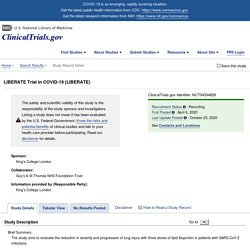
This change may or may not be caused by the intervention/treatment being studied.A type of eligibility criteria that indicates the age a person must be to participate in a clinical study. This may be indicated by a specific age or the following age groups:The age groups are: Child (birth-17)Adult (18-64)Older Adult (65+)A measure of all deaths, due to any cause, that occur during a clinical study.A method used to assign participants to an arm of a clinical study. The coronavirus likely can remain airborne. It doesn’t mean we’re doomed.
When a new virus blasts out of the animals that harbored it and into people, experts can usually say, thank goodness it’s not like measles.

That virus is more contagious than any others known to science: Each case of measles causes an astronomical 12 to 18 new cases, compared to about six for polio, smallpox, and rubella. Each case of the new coronavirus is estimated to cause two to three others. The reason the measles is so, well, viral, is that the microbe is so small and hardy that it is able to stay suspended in the air where an infected person coughed or sneezed for up to two hours, making it one of the only viruses that can exist as a true aerosol. Now there are conflicting reports on whether the new coronavirus can. EFSA 09/03/20 Coronavirus: no evidence that food is a source or transmission route. EFSA is closely monitoring the situation regarding the outbreak of coronavirus disease (COVID-19) that is affecting a large number of countries across the globe.
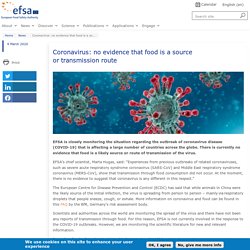
There is currently no evidence that food is a likely source or route of transmission of the virus. EFSA’s chief scientist, Marta Hugas, said: “Experiences from previous outbreaks of related coronaviruses, such as severe acute respiratory syndrome coronavirus (SARS-CoV) and Middle East respiratory syndrome coronavirus (MERS-CoV), show that transmission through food consumption did not occur.
At the moment, there is no evidence to suggest that coronavirus is any different in this respect.” The European Centre for Disease Prevention and Control (ECDC) has said that while animals in China were the likely source of the initial infection, the virus is spreading from person to person – mainly via respiratory droplets that people sneeze, cough, or exhale. Scientists conclude people cannot get coronavirus twice.
A number of reported cases of coronavirus patients relapsing after overcoming the disease were actually due to testing failures, South Korean scientists say.
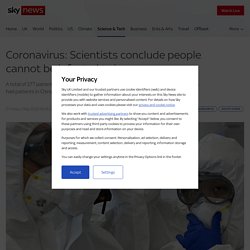
Researchers at the South Korean centre for disease control and prevention (CDC) now say it is impossible for the COVID-19 virus to reactivate in human bodies. There have been more than 10,000 confirmed coronavirus cases in South Korea, with 245 deaths - a 2.3% fatality rate, which is lower than the 3.4% average as stated by the World Health Organisation. A total of 277 patients in the country were believed to have fallen ill for a second time, as had patients in China and Japan. This prompted concerns that the virus could be mutating so quickly that people were not necessarily immune to catching it again. However, genetic analyses of the virus have not found any substantial changes which would effectively disguise it from the immune system. :: Listen to the Daily podcast on Apple Podcasts, Google Podcasts, Spotify, Spreaker.
Coronavirus ‘spike’ protein just mapped, leading way to vaccine. Researchers worldwide are racing to develop potential vaccines and drugs to fight the new coronavirus, called SARS-Cov-2.
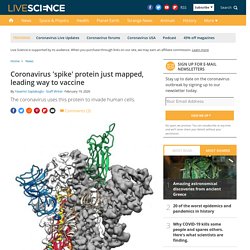
Now, a group of researchers has figured out the molecular structure of a key protein that the coronavirus uses to invade human cells, potentially opening the door to the development of a vaccine, according to new findings. Previous research revealed that coronaviruses invade cells through so-called "spike" proteins, but those proteins take on different shapes in different coronaviruses. Covid-19 may cause brain complications in some, say doctors. Brain complications, including stroke and psychosis, have been linked to Covid-19 in a study that raises concerns about the potentially extensive impact of the disease in some patients.
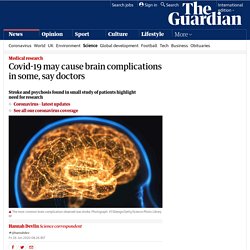
The study is small and based on doctors’ observations, so cannot provide a clear overall picture about the rate of such complications. Study says Covid-19 appears to attack placenta during pregnancy. Pathological exams completed directly following birth found evidence of insufficient blood flow from the mother to the fetus and blood clots in the placenta.

That might interfere with the placenta's role in delivering oxygen and nutrients from the mother's blood stream to the growing baby and removing waste products from the baby's blood. "Not to paint a scary picture, but these findings worry me," said Northwestern Medicine obstetrician Dr. Mini organs reveal how the coronavirus ravages the body. Researchers are growing miniature organs in the laboratory to study how the new coronavirus ravages the body.
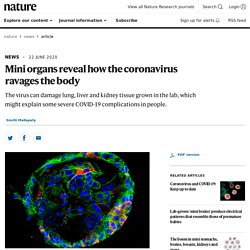
Studies in these organoids are revealing the virus’s versatility at invading organs, from the lungs to the liver, kidneys and gut. Researchers are also experimenting with drugs in these mini tissues to see whether such therapies might be candidates to treat people. Physicians know from hospitalised patients and autopsies that SARS-CoV-2 can have a devastating effect on organs.
But it’s unclear whether some of this damage is directly caused by the virus or by secondary complications of the infection. Multiple groups are using organoid studies to show where in the body the virus travels, which cells it infects and what damage it does. “The beauty of organoids is that they resemble the true morphology of tissues,” says Thomas Efferth, a cell biologist at Johannes Gutenberg University of Mainz, Germany. Investigative Antibody Completely Inhibits SARS-CoV-2 Infection. An investigative antibody for SARS-CoV-2 has reported 100% inhibition of viral infection during an in vitro experiment conducted at a low antibody concentration.

Sorrento Therapeutics announced Friday its anti-SARS-CoV-2 antibody STI-1499 completely neutralized virus infectivity at a very low antibody dose, indicating its candidacy for further assessment and development by the San Diego-based drug maker. An interactive visualization of the exponential spread of COVID-19. Google Maps Covid-19 layer shows coronavirus outbreaks near you.
Google Maps Covid-19 overlay Google Google on Wednesday announced a new feature in Google Maps that will show you how many Covid-19 cases there are in particular geographic regions.

It pulls in information from Johns Hopkins, the New York Times, and Wikipedia and displays a color-coded map with the seven-day average of new cases per 100,000 people in a specific area. It will work in 220 countries and territories. This means you can open Google Maps to see outbreaks in your area, which could be helpful if the disease spreads more rapidly in the fall and winter. Google Maps Covid-19 layer The feature is rolling out for iPhones and Android phones this week. Once you get the update, you’ll be able to use the new feature by doing this: Open Google Maps.Tap the layers button, which looks like a square on top of another square.Choose the “Covid-19 Info” layer.Now you’ll see a map of cases around the world, color-coded by severity.
Rookerie. Why Does COVID-19 Have So Many Symptoms? Covid-19: Asymptomatic Carriers. Comp of Characteristics of Patients with Asymptomatic vs Symptomatic Coronavirus Disease 2019 in Wuhan, China. Coronavirus disease 2019 (COVID-19) emerged in Wuhan, China, in December 2019 and has spread globally with sustained human-to-human transmission outside China.1,2 To control the spread of COVID-19 and isolate patients as early as possible, the Chinese government requested that close contacts of individuals with COVID-19 must be screened for severe acute respiratory syndrome coronavirus 2 (SARS-CoV-2) infection.
During the screening process, we found some patients whose test results were positive for SARS-CoV-2 but who had no symptoms or signs throughout the course of the disease. This case series was approved by the institutional ethics board of Zhongnan Hospital of Wuhan University. All consecutive patients with COVID-19 confirmed via RT-PCR admitted to Zhongnan Hospital of Wuhan University from December 24, 2019, to February 24, 2020, were enrolled. Oral informed consent was obtained from all patients.
Data were analyzed using SPSS statistical software version 19.0 (IBM). Zoonology. What's the science behind mink and coronavirus? First case of coronavirus detected in wild animal. Zoonotic Antigenicity. HOW COVID-19 attacks the Body. COVID Processes. Cytokine storm (COVID-19) SARS-COV-2 Interventions. Fire in the Hole! New Equalibria. Post Pandemic. Viral Loads. Pandemiology. Healthy Lives.